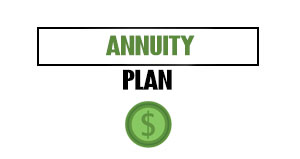As a freelancer, you can set your own schedule, choose clients, and work wherever you like. That freedom comes at a price, especially when it comes to finances. Unlike traditional employees, freelancers have no access to employer-sponsored retirement plans, pension plans, or matching contributions. They’re instead left to fend for themselves during retirement.
But can freelancers retire? Well, among self-employed Americans, only one in five (21%) can afford to contribute to retirement regularly. The good news is that freelancers can still prepare for retirement with intention, discipline, and a willingness to adapt.
In this post, we’ll discuss the realities, challenges, and strategies freelancers can use to prepare for retirement.
Table of Contents
ToggleThe Retirement Hurdle for Freelancers
Traditionally, saving for retirement feels seamless for employees. Employee contributions are automatically deducted from their paychecks. Employers can also add matching funds. Additionally, they can receive perks such as health insurance or stock options.
As freelancers, you face unique challenges and lack this safety net;
- No built-in benefits. Unlike employees with access to 401(k)s and other workplace retirement plans, freelancers are on their own. Due to this, 27% of freelancers consider the lack of retirement benefits to be a major disadvantage.
- Low retirement plan participation. Freelancers are much less likely to contribute to retirement accounts. Only 13% of self-employed workers in single-person businesses reported participating in retirement plans, compared to almost three quarters of traditional workers.
- Minimal savings reserves. In many cases, freelancers aren’t building long-term security. According to a study of gig workers, 70-80% had $1,000 or less in savings, with over 40% having no savings at all, indicating a severe lack of emergency funds.
- Unpredictable income. Your income may fluctuate wildly as a freelancer, making it difficult to commit to consistent work and savings.
Although freelancers face these challenges, it’s still possible to retire — they just have to take proactive steps to do so.
How Much Do Freelancers Really Need?
A retirement plan always begins with the question: How much is enough?
For estimating the amount of retirement nest egg you’ll need, financial planners often use the “25x rule.” To achieve financial independence, this rule recommends saving 25 times your annual living expenses. So, for example, assuming you need $40,000 per year, you should aim to save $1 million.
However, freelancers should also consider;
- Healthcare costs. Remember, Medicare doesn’t kick in until you’re 65.
- Variable income history. There is a possibility that Social Security benefits will be reduced as a result.
- Inflation and longer lifespans. As a result, a larger cushion is needed.
Regardless of the exact number, knowing your target allows you to reverse-engineer a savings plan.
For a better picture of one’s financial health, it’s also recommended to speak with a financial advisor. The do-it-yourselfers, however, can use online calculators to assist with planning. Calculator.net’s Retirement Calculator, for example, calculates your retirement needs, given your current age, and desired income after retirement.
Here’s How to Build a Strong Retirement Nest Egg as a Freelancer
While freelancers lack employer-sponsored retirement plans, they can still build a secure future through smart savings and investing strategies.
You can start by following these steps.
Start early.
You have only one powerful tool at your disposal: time. As a result of compound growth, the earlier you start, the greater the potential returns. When you start saving in your 20s or 30s, even small contributions can add up.
However, don’t wait until you “make it.” Start putting aside money now while you build your freelance business. It’s better to start small today than to scramble later on.
Pick the right retirement account.
Even though freelancers lack access to workplace 401(ks), there are excellent alternatives. The right choice depends on your income, business setup, and hiring plans.
Higher contribution limits.
- Solo 401(k). This is the best option for one-person businesses. As an employee and employer, you can contribute up to $70,000 in 2025, plus $7,500 if you are 50 or older. It also offers a Roth option and loan flexibility; however, once the balance reaches $250,000, additional paperwork is required.
- SEP IRA. This is a flexible option for people with variable incomes. You can contribute up to 25% of your net earnings (maximum $70,000 in 2025). The setup is simple, but you must match employee contributions with the same percentage.
- SIMPLE IRA. If you plan to hire, this is a good option. Contributions from employees can reach $16,500 in 2025, while employers must match contributions by 2% or 3%. This plan has lower limits than other plans, but it’s very easy to manage.
Lower contribution limits.
- Traditional IRA. Taxes may apply to withdrawals in retirement, but contributions may be deductible. The limit is $7,000 ($8,000 if you are 50 or older).
- Roth IRA. An excellent choice for freelancers and gig workers. In this account, neither growth nor qualified withdrawals are taxed if you are over 5912, or if you have held the account for five years or more. The limits are the same as those for traditional IRAs.
Other options.
- Health Savings Account (HSA). HSAs offer triple tax savings when combined with high-deductible health plans. Depending on your age, you can save $4,300 as an individual or $8,550 as a family, plus $1,000 if you’re 55 and over. If funds are not used for medical purposes, they are taxed.
Be careful not to complicate things. If your business grows, add to the account that matches your situation regularly, and adjust as needed.
Set a savings goal.
Often, saving “when you can” leads to falling short. Rather than setting a rigid dollar amount, set a percentage that increases with your income.
Invest in growth.
You won’t retire with a savings account. Make your money work through investments such as index funds, mutual funds, or ETFs. By diversifying your investments, you lower your risk while improving the growth prospects of your money.
Over time, even small, consistent contributions can compound into meaningful wealth.
Separate business and personal finances.
When you blur the line between your business income and personal spending, you’re setting yourself up for confusion — and undersaving.
Pay yourself regularly, open dedicated accounts, and contribute to your retirement. This will make taxes easier, as well as ensure retirement plans are made.
Protect what you’ve built.
Your savings could be drained quickly in the event of an illness or injury that prevents you from working. When you’re unable to work, disability insurance replaces your income if you don’t have an emergency fund.
Investing in a retirement plan is like putting insurance on your nest egg. It helps ensure your long-term goals remain intact regardless of what happens in life.
Tackling the Income Rollercoaster
Due to the unpredictable nature of freelance income, it’s challenging to save consistently. To make the ride smoother, follow these steps;
- Pay yourself a salary. No matter how much your income spikes, you transfer a fixed amount to your personal account every month.
- Automate savings. After payday, set up automatic contributions to retirement accounts.
- Use windfalls wisely. Whenever possible, allocate some funds to long-term savings when dealing with large client payments or unexpected projects.
- Build a buffer fund. For lean months, save three to six months’ worth of expenses in a savings account.
The key to perfection is consistency. Over decades, modest, regular contributions add up.
Don’t Forget About Social Security
Although freelancers pay into Social Security through self-employment tax, their benefits may be reduced if their income is lower or inconsistent. Among the strategies for maximizing Social Security are;
- Rather than underreporting income to reduce taxes, accurately report income.
- In benefit calculations, additional years of higher income can replace lower-earning years.
- Aim for the largest possible monthly payout by strategically timing benefits until age 70.
In retirement, Social Security can provide a solid income base, even if it can’t cover all expenses.
Healthcare: The Elephant in the Room
When healthcare costs aren’t planned, retirement can be derailed. Freelancers need to;
- Be sure to budget for premiums, out-of-pocket expenses, and possible long-term care costs.
- When paired with a high-deductible health plan, Health Savings Accounts (HSAs) offer triple tax benefits.
- For group health coverage, consider marketplace options or join an association.
I can’t stress this enough. Early planning prevents healthcare from turning into a retirement crisis.
Lifestyle Design: Retirement on Your Terms
As a freelancer, you can design a lifestyle that isn’t tied to a 9-to-5 schedule. The same mindset applies to retirement:
- Partial retirement. For income and personal satisfaction, some freelancers work part-time.
- Geoarbitrage. By relocating to a lower-cost area, you can stretch your savings even further.
- Phased retirement. In both financial and emotional terms, it makes more sense to reduce workload rather than stop suddenly gradually.
Retirement doesn’t have to mean “stop working.” It can mean “work differently.”
Final Thoughts: Yes, Freelancers Can Retire
As a freelancer, the road to retirement is undoubtedly steeper than it is as an employee. However, steeper does not mean impossible. By planning ahead, saving consistently, and using retirement accounts effectively, freelancers can afford to retire, often at their own pace.
A freelancer must be self-disciplined, adaptable, and creative. With those qualities, retirement becomes something to look forward to, not a question mark.
Image Credit: Anna Shvets; Pexels














